Civil War in Brunswick, Maine
Michael C. Kimmage, 12 November 2020
Harriet Beecher Stowe lived in Brunswick, Maine from 1850 to 1852. It was and is a small town in coastal Maine, home to Bowdoin College, where Stowe’s husband was briefly a professor of theology. Harriet Beecher Stowe was not then famous. Neither was her husband. They both belonged to the New England religious intelligentsia, devout Protestants with a knack for being prolific writers. Interested in politics, they were the first generation to grow up in the American Republic. (Harriet Beecher Stowe was born in 1811.) When it came to politics, the bookish Stowes were more concerned with reform than with power. Ethereal as they might seem, they stood close to the mainstream of antebellum American culture. They did not endorse the status quo, and they were not radicals.
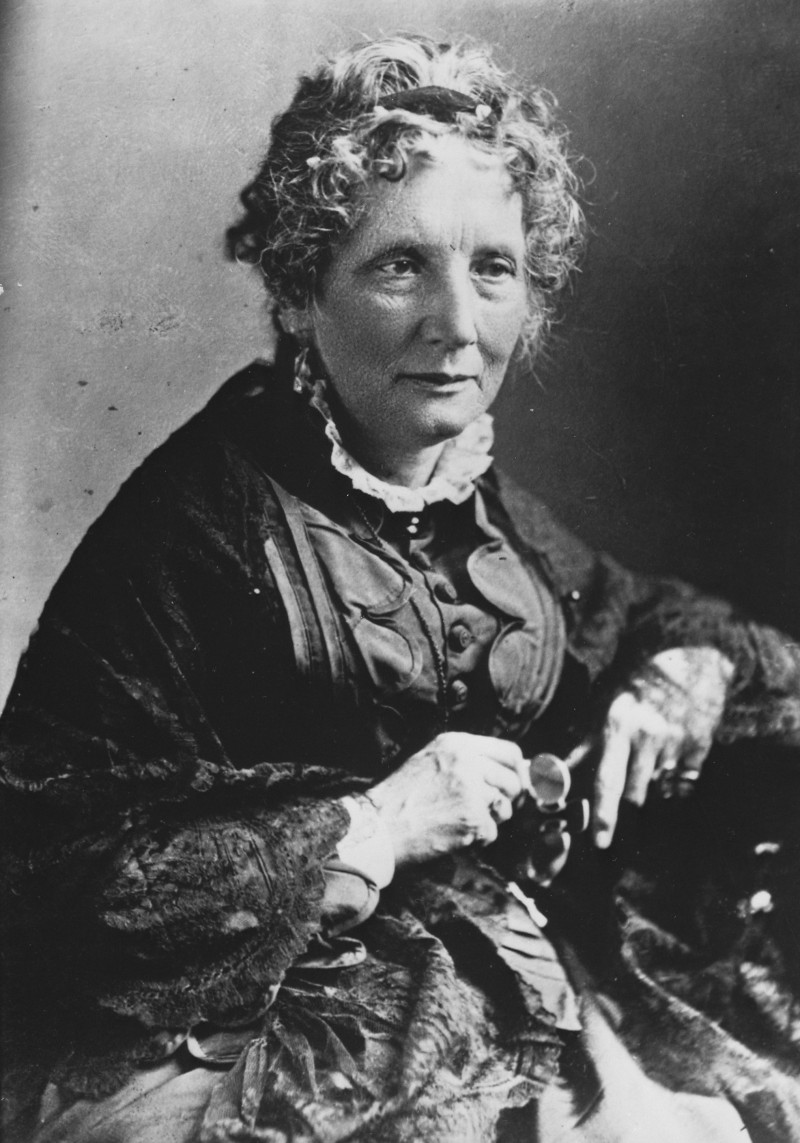
Harriet Beecher Stowe’s arrival in Brunswick coincided with the passage of the Fugitive Slave Act, a transformative piece of legislation. Slave-holding southerners wanted to ensure that their slaves could not escape North. By declaring slaves property wherever they might be, the Fugitive Slave Act stipulated that any slave who ran away should be captured and returned to the South – whether the person was apprehended in a border state like Pennsylvania or far up North in a state as un-southern as Maine. The Fugitive Slave Act had an especially strong impact on New England, which considered itself the birthplace of American liberty and the guarantor of a Christian zeal inherited from the Puritan founding of Massachusetts in the 1620s and 1630s. Yet the Northern states had been complicit with slavery from the start. They had managed the slave trade, practiced slavery themselves and erected a booming textile industry on cotton produced by slave labor in the American South. The Fugitive Slave Act reinforced these hard truths, dramatizing the involvement of all American citizens in the perpetuation of slavery circa 1850.
The Fugitive Slave Act made many impressions on American literature. In 1850, Herman Melville was beginning Moby-Dick on his farm in Pittsfield, Massachusetts (about 420 kilometers from Brunswick, Maine). His is a novel of strange obsessions and of leadership gone terribly wrong. The Pequod, the whaling ship in Moby-Dick, is the ship of state named after a Native American tribe eviscerated by the Puritans in the seventeenth century. The Pequod could have returned safely to harbor; its crew kills many whales in the course of its voyage; the ship’s barrels have been filled with whale oil. The Pequod’s captain is so overcome with hatred that he must pursue the white whale into the oblivion of shipwreck. More than a decade before it broke out, Melville could not have known that civil war was coming. He did intuit a disaster, though, and he wove it into his sprawling, ambiguous, immortal novel. His father-in-law was a Massachusetts judge tasked with implementing the Fugitive Slave Law. In 1850, Melville knew that the scope for compromise on the issue of slavery was rapidly shrinking. He knew that the political temperature was rising.
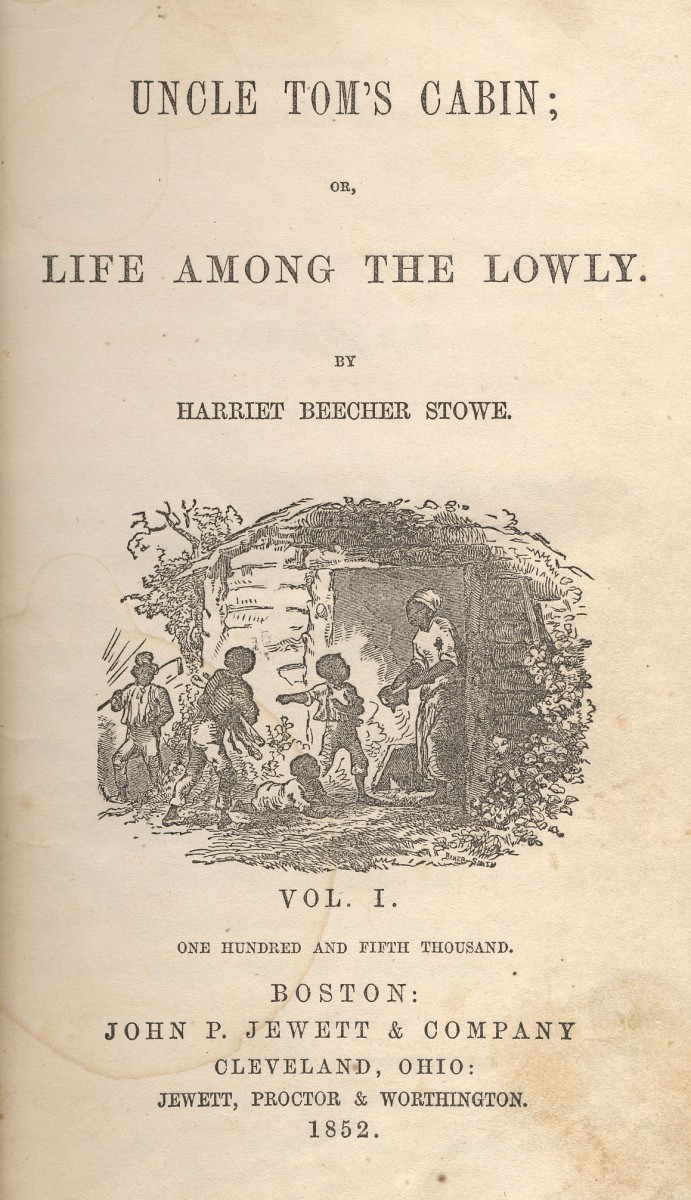
Responding to the same national scene, Harriet Beecher Stowe avoided metaphors and symbolism. When she picked up her pen, in 1851, she went to the heart of the matter. She wrote Uncle Tom’s Cabin, a novel that would be published in 1852 and is not less important than the Fugitive Slave Act as a cause of the Civil War. “So you are the little woman who wrote the book that started this great war,” Abraham Lincoln is supposed to have said when he met Harriet Beecher Stowe in November 1862. Is every American complicit in slavery, Uncle Tom’s Cabin asks? Yes was Stowe’s unequivocal answer. She depicted slavery not just as an evil rooted in political economy and not just as a violation of a slave’s personhood. She used Uncle Tom’s Cabin to prove the horrible effect of slavery on the family, white and black, and therefore on the soul of the nation. Her book, a political litmus test, electrified the North. It terrified the South.
We tend to think of literature as a complicating and moderating force. It slows us down and gets us to think, to contemplate life from many different angles, to empathize with those who are not like us – or simply not us. Uncle Tom’s Cabin belongs to the literature of intensification: it wants us to know, to see and to feel the evil of slavery. It poses a question not for the sake of the question but for the sake of the only true answer to the question. Though it is not first-class literature, Uncle Tom’s Cabin achieved its author’s objective far more comprehensively than she could have hoped. It even acquired global stature. It was widely read throughout the Soviet Union. Berlin has a neighborhood, a street and a subway station called Onkel Toms Hütte, names that were given in the 1920s. The original neighborhood name derived from a local landlord, Thomas, who opened a beer garden on his property. Through irony or through literary appreciation or through a bit of both, it became a tribute to the novel Harriet Beecher Stowe wrote in Brunswick, Maine.
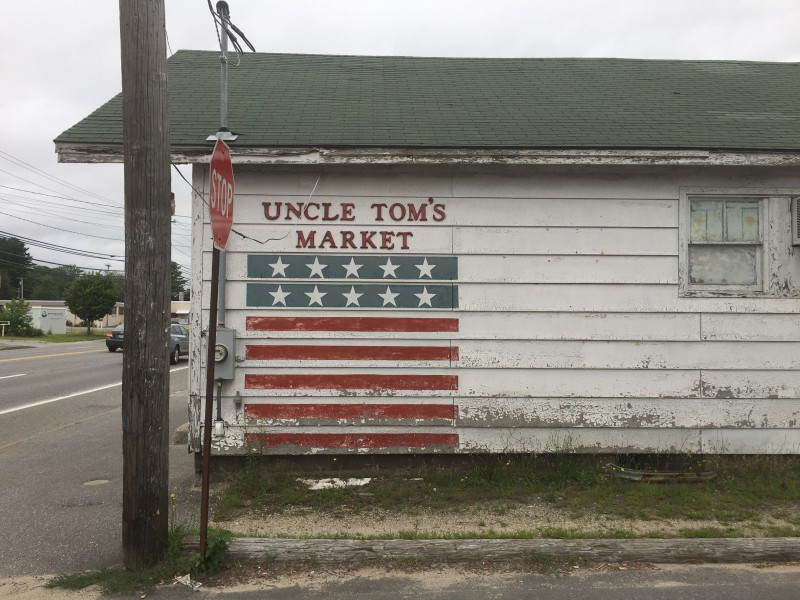
Brunswick has quite a few reminders of Stowe’s two-year stay. Most unspectacular is an out-of-business beer store named “Uncle Tom’s Market” on the town’s commercial strip. It is an odd name to say the least. The character of Uncle Tom, in Uncle Tom’s Cabin, is notoriously quiescent, a turn-the-other-cheek Christian who depends on the patronage of well-intentioned whites. In the American lexicon, to be called an “Uncle Tom” is to be identified as a sell-out. No doubt, this is irrelevant to the beer store that honors him. The store’s name atop a faded version of the American flag bespeaks the novel’s national significance – a nod perhaps to Northern victory in the Civil War or to the new country brought into being by the nineteenth-century clash between North and South. Abraham Lincoln had called the Civil War a “new birth of freedom.”
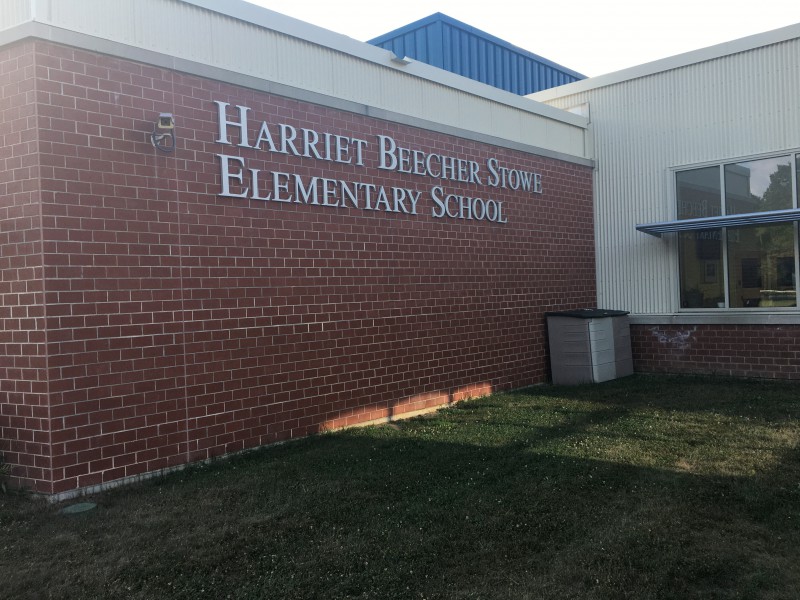
Less quirky than “Uncle Tom’s Market” is the Harriet Beecher Stowe Elementary School, a modern structure that associates Stowe with learning and learning with the world-changing novel Stowe had brought to life in Brunswick. This homage Stowe would have appreciated. The New England religious intelligentsia connected learning to self-improvement, emphasizing the Latin roots of the word education, a leading “out of,” out of ignorance, out of selfishness, out of sin. Stowe authored Uncle Tom’s Cabin in order to educate her reading public and to lead it away from the sin of slavery. Her novel is pre-Flaubertian with a vengeance, written in haste and without much literary style. With its deathbed scenes and high melodrama, it could be read as a parody of a Charles Dickens. But Uncle Tom’s Cabin educates brilliantly, achieving this end in part because Stowe had immersed herself in abolitionist efforts to document slavery, in a vast reservoir of non-fiction narrative and fact. Because it educates, Uncle Tom’s Cabin also persuades. Students will always have much to learn from Harriet Beecher Stowe.
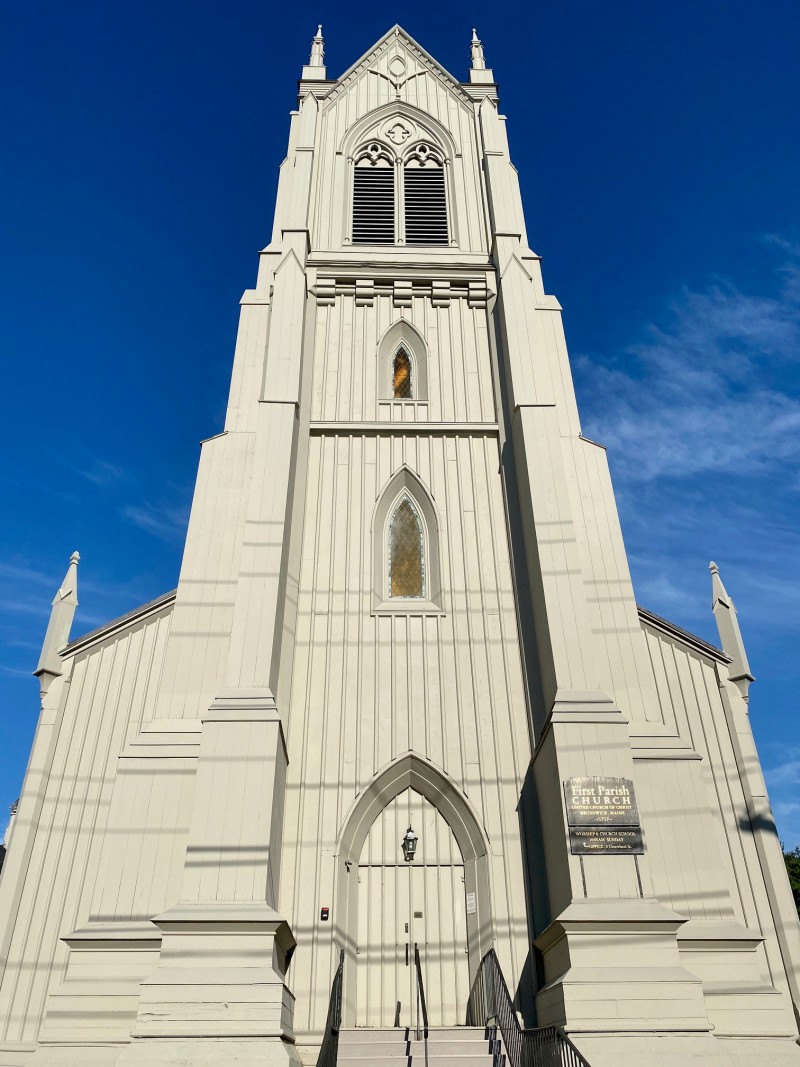
The First Parish Church, in which inspiration for Uncle Tom’s Cabin came to Harriet Beecher Stowe in 1851, still stands in Brunswick. Built from wood (in 1845) and painted a light beige, it is an easily recognizable specimen of New England church architecture, with a tall steeple and only a bit of neo-gothic ornamentation – pretty, sober, geometric, simple. These churches have a purpose untethered to the afterlife. They are the visual focal points of their communities. Their purpose is civic as well as spiritual, representing the high civic aspirations that are supposed to prevail in their vicinity. Perhaps Harriet Beecher Stowe had the vision for Uncle Tom’s Cabin in this building because she felt that high civic aspirations were not being met in the America of 1850. They were being turned inside out. Of this, the Fugitive Slave Act had been the unavoidable evidence.
Some 170 years have passed since Stowe started to write Uncle Tom’s Cabin. The New England religious intelligentsia is gone. Slavery has been abolished. The moralistic fiction at which Stowe excelled may still be around in some form, probably in the self-help genre. But the sentimental melodrama that requires the label “Victorian” died long before Queen Victoria herself died in 1901, much as the fashions of dress have transcended the crinoline and the hooped skirts of the 1840s and 1850s, those signifiers of femininity and domesticity that must have been so uncomfortable to wear and that were meant to contain mobility and flexibility. One is tempted to say that Harriet Beecher Stowe’s legacy in Brunswick, Maine is just a bit of local color. It is worthy of a sentence or two in a guidebook or the notice of a literary beer-store owner but otherwise unlikely to remind or disturb or provoke.
That might have been the case in the summer of 2019. Spending part of my summer in Brunswick in 2020, I could not help but notice the many “Black Lives Matter” signs across Brunswick, which is, like most of Maine, predominantly white. They are an interesting juxtaposition with Uncle Tom’s Cabin. For “Black Lives Matter” is a good summary of Stowe’s message in 1852, despite the improbable plot twists and the bad prose and the tendency to see characters as archetypes (and thus to make them less humanly full than they might be). Black lives matter – a banal phrase, a statement of the obvious in and of itself. It is in denial that the words take on their deeper meanings. Why would black lives not matter? Why does one have to ask the question? Why did one have to ask it in 1851? And why today?
No one issue antagonizes Americans in this pandemic summer the way slavery did in the 1850s. Sectional strife is real in 2020 and it has a North-South axis. It pales beside the urban-rural divide, however: the Civil War was truly a North-South conflict fought by the towns, villages and cities of both sides. Many journalists and historians have analogized the Trump era to the 1850s. Two months before the 2020 presidential election, it is not uncommon to hear about the possibility of another civil war, speculation that ranges from the literal taking up of arms to the figurative image of a house divided (Abraham Lincoln’s biblical turn of phrase in the 1850s) or of a ship tending inevitably toward its own demise (Melville’s subject in Moby-Dick) – a country at odds with itself. In 2020, civil war is in the air, not least because of a vividly remembered Civil War and the never-ending struggle to define its statues, monuments and memorials and thus to control the public memory of an event that matters far more (emotionally) than the American Revolution or the Second World War.
The Civil War echo is in the palpable moral fervor, which Harriet Beecher Stowe can help us to understand. At some point in the recent past, cable-news journalists stopped reporting news, giving up on analysis, and got into the business of moralizing about the news. It must be a lucrative business. President Trump’s critics are convinced of the moral wrongness of the man who presides over them. The President and his fans are convinced of the moral wrongness of his critics. Each side has narratives that follow from their moral convictions, and those narratives will long outlast the career of Donald Trump. Harriet Beecher Stowe would have found our debates bizarre; she would have found us bizarre. She would be entirely at home with the moral fervor that surrounds us. All one can conclude, not knowing the future, is that the collective moral fervor behind American politics, in the summer of 2020, will have political consequences. They might take five or ten years to register, but register they will.
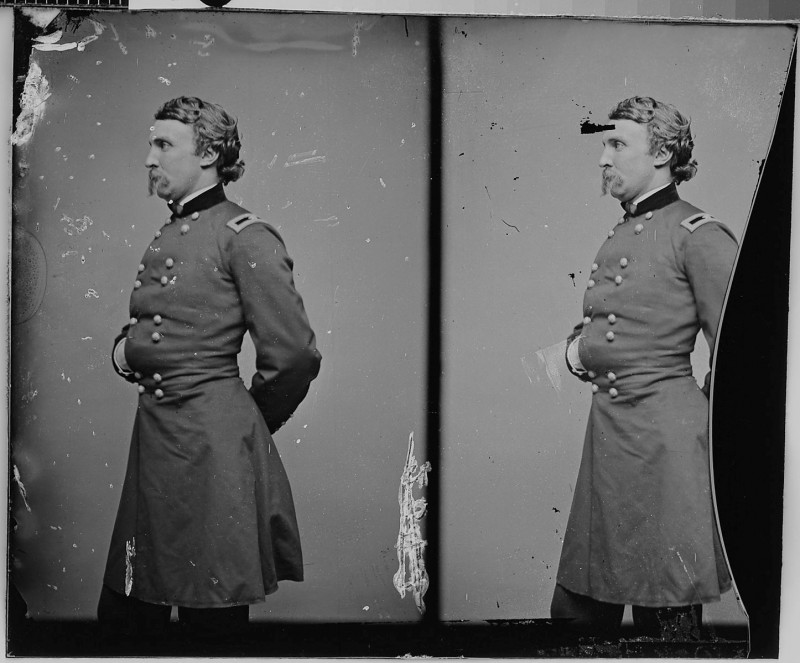
After a day laboring over the manuscript, Harriet Beecher Stowe used to read out drafts of Uncle Tom’s Cabin in the evening. People from the town would gather at her home to listen. Among them was a young man (23-years-old at the time) whose name appears in most histories of the Civil War. Joshua Lawrence Chamberlain entered Bowdoin College in 1848 and was a lifelong parishioner in Brunswick’s First Parish Church. He became a professor of rhetoric at Bowdoin College and later joined the Union Army. He was a decisive factor in the decisive 1863 battle of Gettysburg, the military turning point of the Civil War. Against the odds, this college professor held a strategic hill, Little Round Top, on the first day of battle. Maine’s Napoleon and Maine’s Cincinnatus returned to Brunswick after the war. He was elected Governor of Maine in 1867 and appointed president of Bowdoin College in 1871. Chamberlain is the Northern war hero par excellence. Educated and serious, more moral than martial, he believed in the cause. He had known what to do with his fervor.
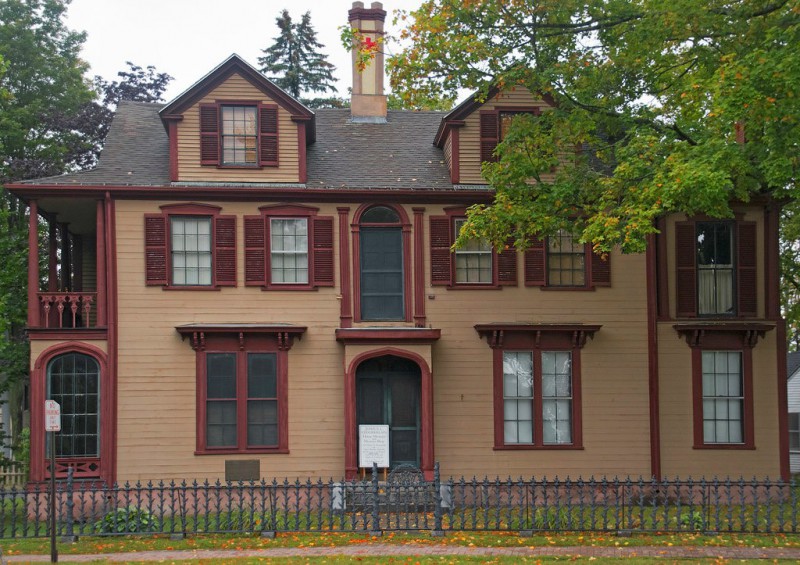
Chamberlain’s house still stands in Brunswick. It is a modest museum displaying medals, maps, swords and regimental banners in addition to his volumes of Tacitus, Herodotus and Thucydides. It is just what you would expect from Joshua Chamberlain, one among many millions of Harriet Beecher Stowe’s thankful readers and an educator who had been consequentially educated by Uncle Tom’s Cabin.

